It had rained overnight. A dousing, drenching rain that drip-dropped off the hillsides and into swollen rivers and drainage channels. The weather forecast said the rain would stop. And it had. But still the clouds looked threatening — squid ink black in places as I looked across the last bit of alluvial plain at the line of mountains that marked the peninsula.
I ditched my waterproof jacket on the advice of the weather forecast, but a spattering of rain greeted my exit from the Seven-Eleven. Before I reached the mountains, there were the pretty bridges and riverside just south of the centre of Uto town. The river was like murky green tea dregs, sediment washed down with the rain clouded the water as it passed under first the tiled, then the pink and grey stone bridge. The grey stone is andesite, and the pink is a local stone — makado-ishi (馬門石) or Aso pink stone. The waterways were built from the 1600s to support the warehousing and transport of goods from the Uto area.
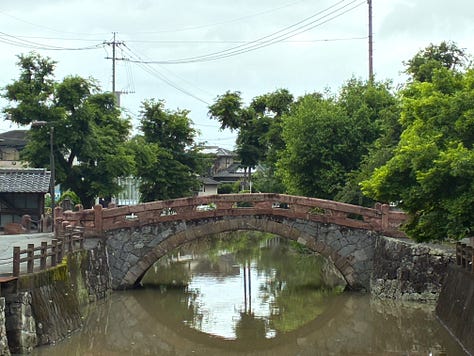
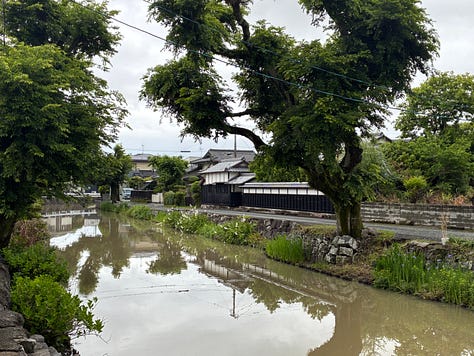
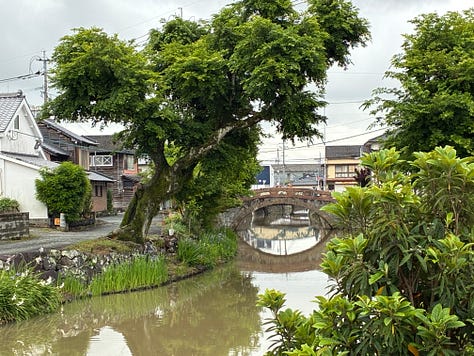
Out of Uto, and across the open plain, tobacco fields, vinyl houses and skylarks trilling as the sky brightened. I stopped to watch three carp jostle in a drainage channel.
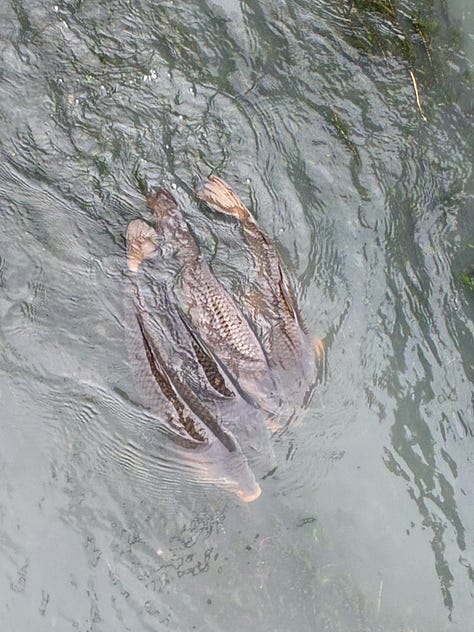
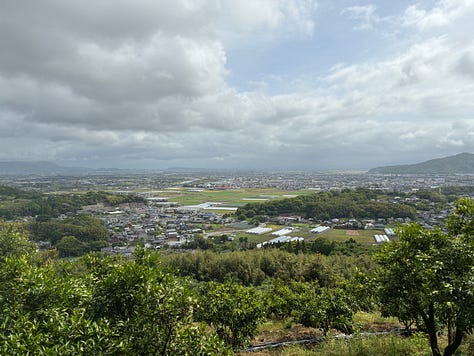
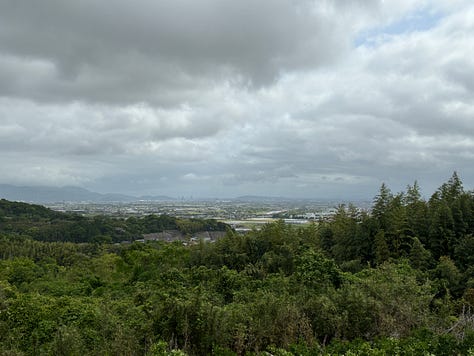
Then, up, through terraced orchards of Seville oranges, clumps of bamboo and forest. Unlike on the plain, and as I expected, the signposting here was good. I could follow the shizen hodo without too much difficulty. At the top of the mountain, the ruins of Hakusan Castle, with a welcome shelter and bamboo bench to rest on. I tried to find out more about this castle, but there doesn’t seem to be much information online about it. It’s just up the hill from Uto Castle ruins on the plain below, so perhaps it was a kind of reserve castle for this. Uto Castle was a minor castle for one of the clans of Higo Province and was one of those ordered to be taken down by the Tokugawa Shogunate in 1637 to prevent further rebellions.
I dropped down from the castle, tight along a fence between orange groves and forest, then into deeper forest, just the whistling of birds, and the occasional rustle of something in the undergrowth. Then to a road, which had become a river through the bamboo. I helpfully cleared a drain clogged with leaves and pine branches, and the road water gushed gratefully into it and away down the mountain. At some point, a sudden window over the Yatshushiro plain on the south side of the Uto Peninsula, a polder-like flatness that looked exactly sea level. The road dropped, down and down. I stopped to examine a trap for a Taiwan squirrel, which rather like the Grey Squirrel in Britain was brought into parks and then spread.
Then, once again, orange grove after orange grove, and a view of the sparkling blue sea. I could sense that Mediterranean feeling once again. The thick forest, and wooden-ness of the buildings takes the edge off the Mediterranean atmosphere. It’s thicker, darker, and spookier than the Mediterranean, like Scandinavian and Mediterranean have been twisted together like two colours of children’s play dough forced back into the tub after a long bout of play — combined, but not throughly mixed.

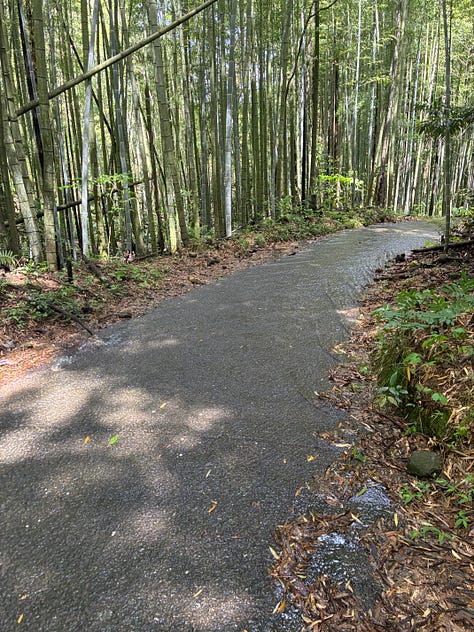

Out of the forest, I wound down through fields and graveyards. Kyushu has one difference from any part of Honshu I’ve been — much fancier graves. They’re bigger, more elaborate, and I’m not sure why.
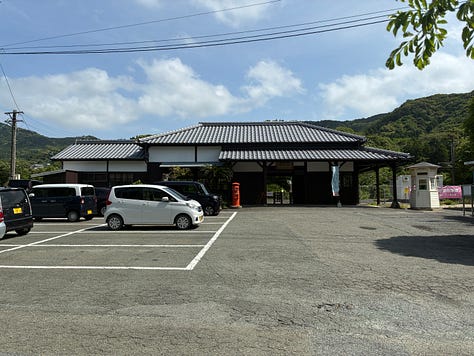
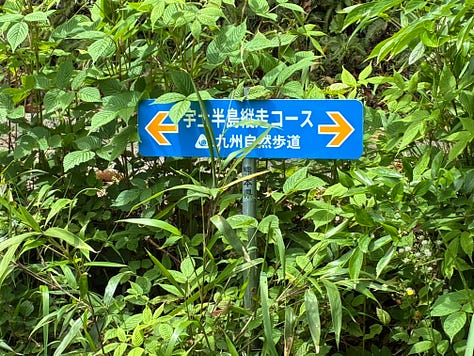
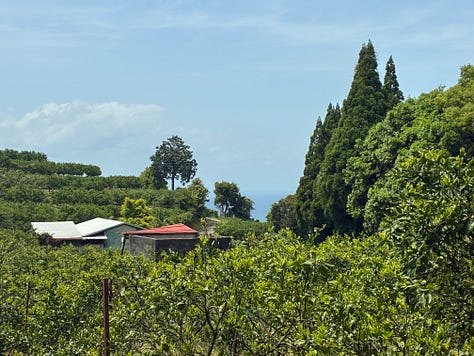
Oda Station had a café, a well-preserved post box, and a friendly café owner/station attendant who congratulated me on my Japanese when I asked if I could use my IC card here. I couldn’t use my card, so for the first time in ages, I had to buy a paper ticket, but it all added to the rustic ambience, as did the owner/station attendant’s children who scurried to the café window to have a good look at me. The café’s cool drinks would have been tempting, had I not just downed and ice cocoa from the vending machine outside.
The train back to Kumamoto was packed with Taiwanese tourists, cheerfully chatting, snapping photos and planning what to do after the train. Just outside Kumamoto City, TSMC is building a huge semiconductor plant, and the whole area around Kumamoto has become popular with Taiwanese tourists.
The next day, I returned, the ticket office and café were quiet. The hydrangeas were in full bloom, and somebody had thoughtfully placed one flower in a jar of water on top of the urinal. Such attention to detail! Imagine someone doing this in Britain!
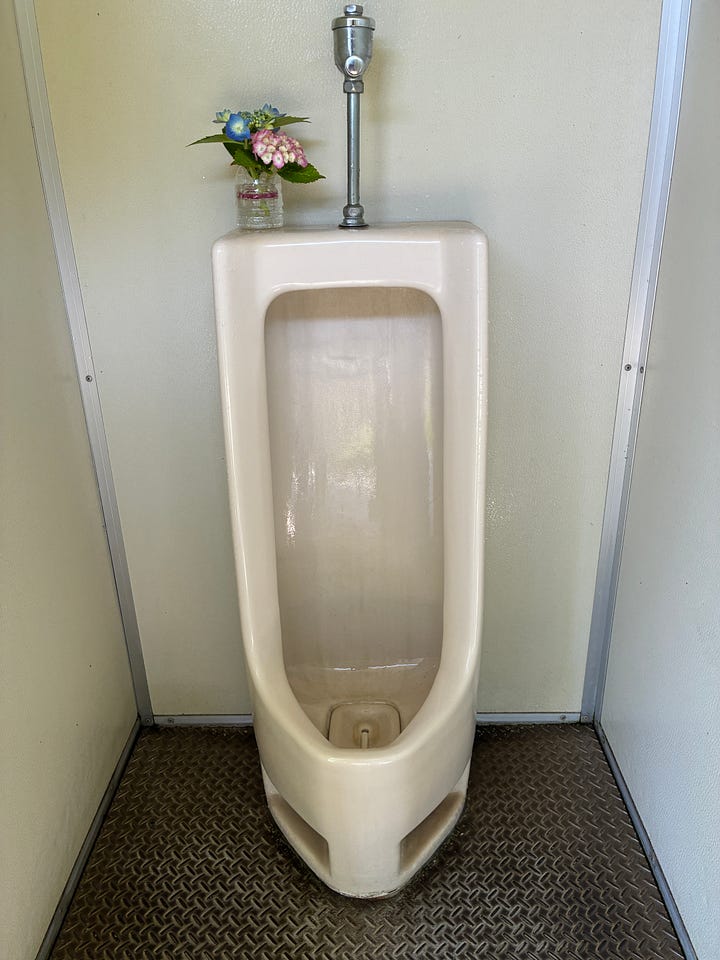
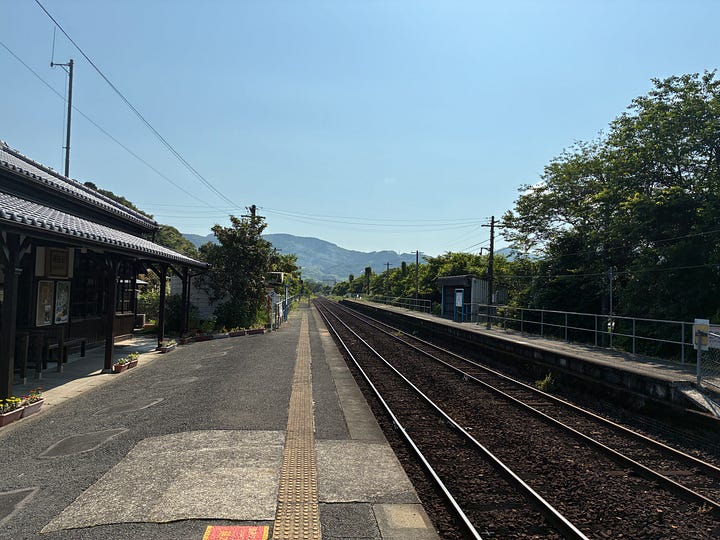
Then, back up the winding road to the trail. There had been no overnight rain this time, and no swollen clouds to cool the relentless sun. Up seemed so much longer than down the previous day. I kept checking the map, was I really not at the trail yet? But there it was, down through a short bit of forest, and then down through more orange terraces, the farmers out in force with water-bowser laden kei-trucks to keep their crop moist.
Black snake, thin head alert! But, something was wrong, the skin was dull, no movement at all. It was dead, run over and frozen into this shape of perpetual alertness.
The sun beat down. The snap, snap of arcing electrical fences, and a smell of stale dung like a petting zoo. The rocks that made up the orchard boundaries are darker, smoother, greyer, somehow more forbidding than the pale limestone of the Mediterranean. There’s something Mayan about them.
Eventually, I came to a long-advertised dam. I expected something small. It was big — on one side a deep-green reservoir, from the far shore of which a deer barked. On the other side, a sheer drop to a swilling pool and fields far below.
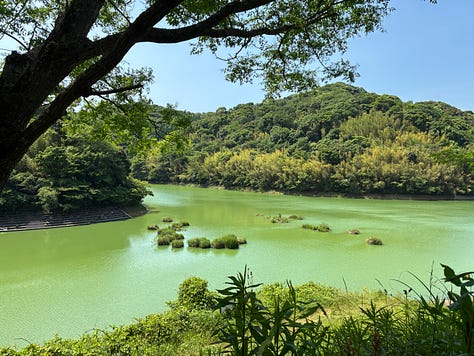
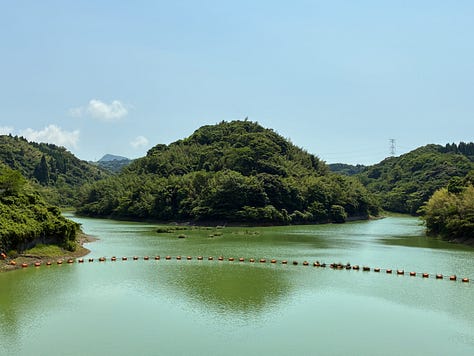
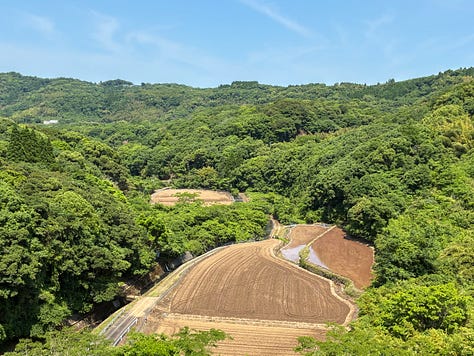
Down again. Following the railway line for a while. The slithery swish of lizard into roadside undergrowth. Then through fields, suburbs and finally into the town of Misumi, the end of the railway line and the end of this walk.
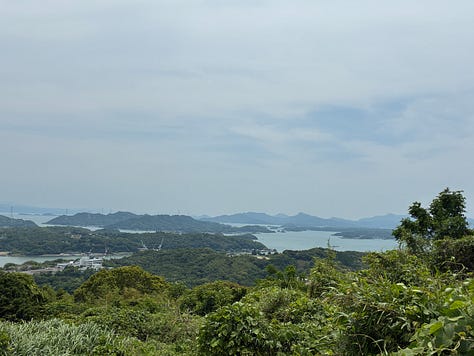

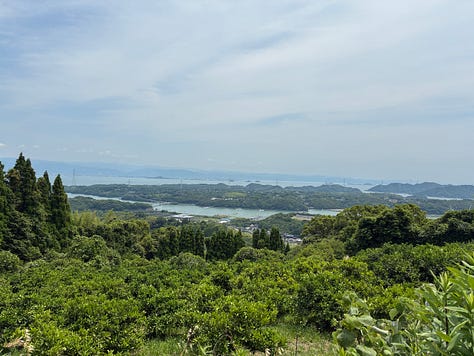
This station too was crowded with Taiwanese tourists. Then, onto the train came a group of drunken oyajis, loud, disturbing the wa. The Taiwanese tourists cheerfully carried on, the other Japanese passengers looked awkward. I moved to allow one oyaji to sit with his other oyaji friends and he over-thanked me profusely and embarrassingly to the point where I wished I hadn’t bothered. At Uto they staggered off, and I could change to a quieter train.




